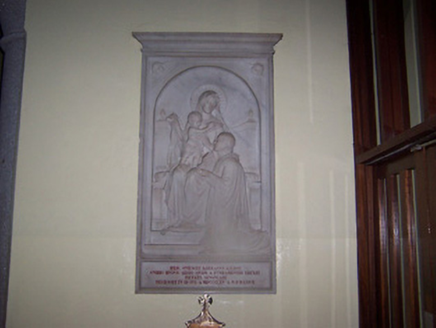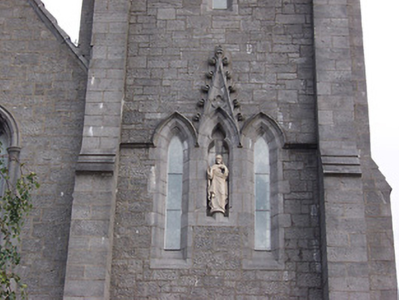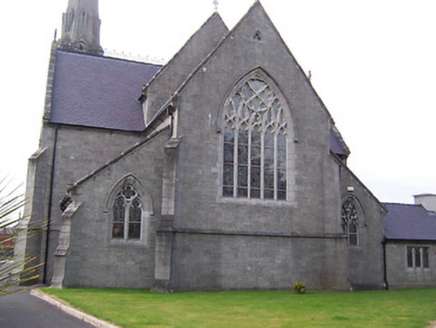Survey Data
Reg No
15009029
Rating
Regional
Categories of Special Interest
Architectural, Artistic, Social, Technical
Original Use
Church/chapel
In Use As
Church/chapel
Date
1855 - 1865
Coordinates
204517, 241473
Date Recorded
08/09/2004
Date Updated
--/--/--
Description
Freestanding four-bay gable-fronted Gothic Revival-style church with side aisles with clerestory above and four-stage tower with broached spire to entrance front (west), built between 1857-61. Pitched natural slate roofs with cast-iron ridge cresting and raised limestone verges with cast-iron cross finials. Constructed of squared dressed limestone rubble with ashlar limestone dressings and detailing. Paired lancet openings to nave (separated by clasping buttresses) and to clerestory above, five light window to chancel gable with geometric tracery, five paired lancets to east gable. Central pointed-arched opening with timber double doors with limestone colonnettes and ashlar hoodmoulding above. Interesting interior with crossbraced timber roof, stained glass windows, white marble stations on the cross and marble memorials. Set back from road in own grounds and bounded by cast-iron railings with fleur de lis finials and buttressed and gabled limestone gate piers with cast-iron gates. Located in elevated site to northeast of Athlone.
Appraisal
A monumental church, located in an elevated position, that dominates the north side of Athlone. It was built in an Early English Gothic-style to designs by John Bourke (died 1871), a prominent church architect of the time. It is the original post-Emancipation church in Athlone and replaced a number of earlier chapels in the town. This attractive church is very well detailed and proportioned, with a slender spire and very fine tracery to the windows. The construction of the church attests to high quality stone masonry and craftsmanship, particularly evident in the fine carved detailing throughout. The white marble 'stations of the cross', by George Collie and the white granite Renaissance-style monument to builder of the church, a Canon Kieran Kilroe, are noteworthy features to the interior. The cast-iron railings to the exterior and the fine gate piers complete the composition.

















